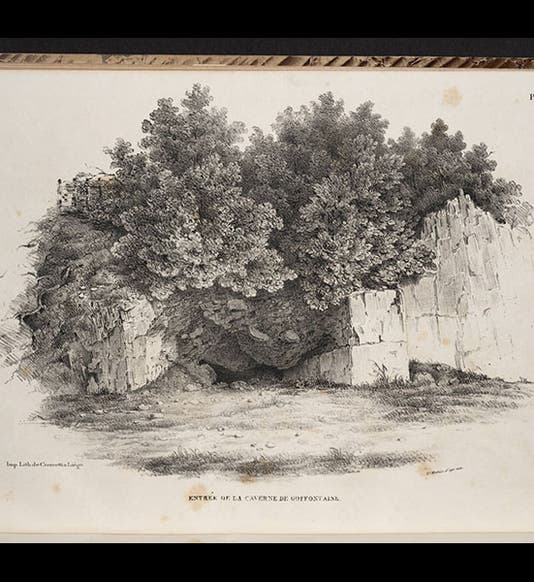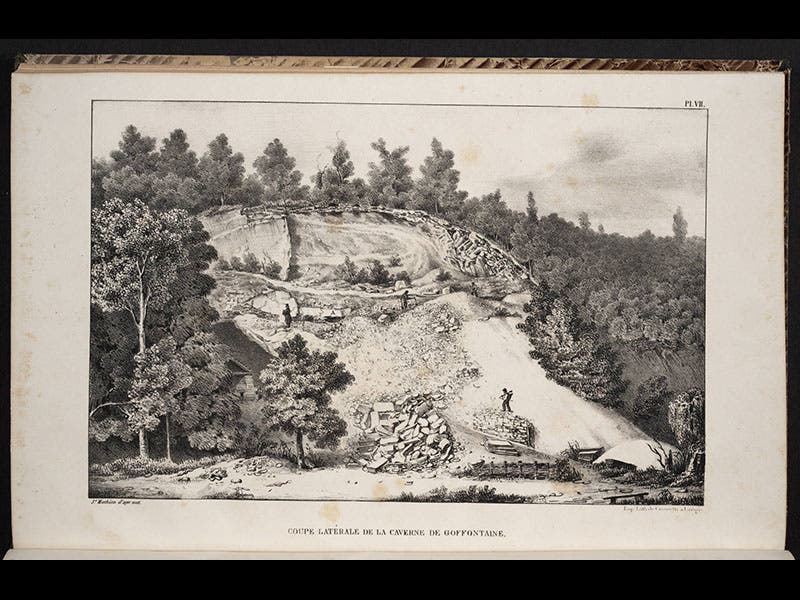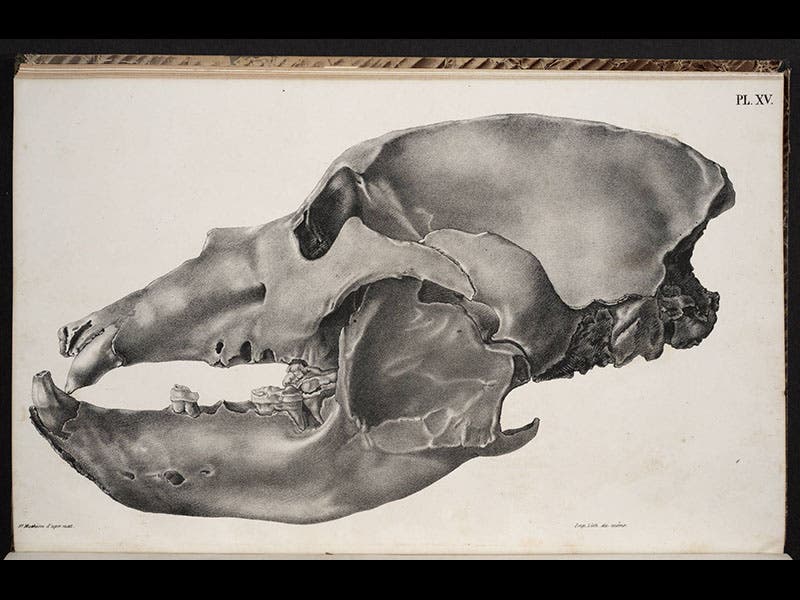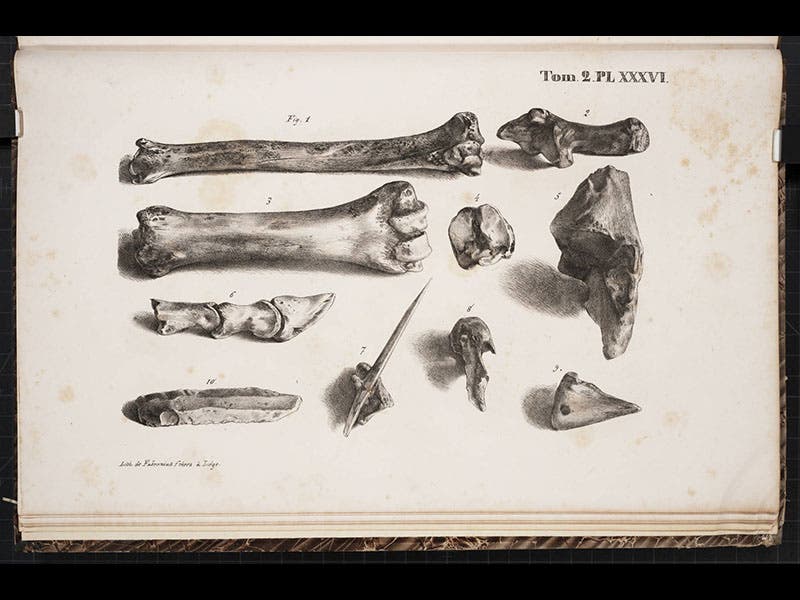Scientist of the Day - Philippe-Charles Schmerling
Philippe-Charles Schmerling, a Belgian physician and amateur antiquarian, was born Mar. 2, 1790. Schmerling lived in Liege, and he spent his spare time exploring the limestone caves in the vicinity, looking for artifacts. Around 1830, he was investigating a cave near the village of Engis; above we show the entrance to the cave (first image) and a section through the cave (second image). Schmerling unearthed the remains of extinct animals, such as cave bears (third image) and hyenas, and he even found a few flaked flints that looked to him like stone tools (fourth image). But the most surprising finds were three human skulls, two adults and a juvenile (fifth image).
In 1833-34, Schmerling published his discoveries in Recherches sur les ossemens fossiles (Researches on Fossil Bones), where he argued that the skulls, animals bones, and tools were evidence that humans had lived on earth much longer than the Biblical 6000 years, at a time when animals that are now extinct had roamed the earth, and that they had hunted those animals with primitive stone weapons. This was one of the first cogent arguments for human antiquity based on actual archaeological evidence.
Schmerling, however, convinced very few people, because it was hard to prove that the skulls, animal bones, and tools were contemporaneous. When he died, just two years after his book came out, no one realized that he had begun a revolution in paleoanthropology. Not until 1863 would his discovery receive proper appreciation. We now know that the two adult Engis skulls were Upper Paleolithic, and the child (not figured in the plates) was Neanderthal. We have Schmerling's beautiful book in the History of Science Collection, and we displayed it in our 2012 exhibition, Blade and Bone: The Discovery of Human Antiquity.
Dr. William B. Ashworth, Jr., Consultant for the History of Science, Linda Hall Library and Associate Professor, Department of History, University of Missouri-Kansas City. Comments or corrections are welcome; please direct to ashworthw@umkc.edu.











